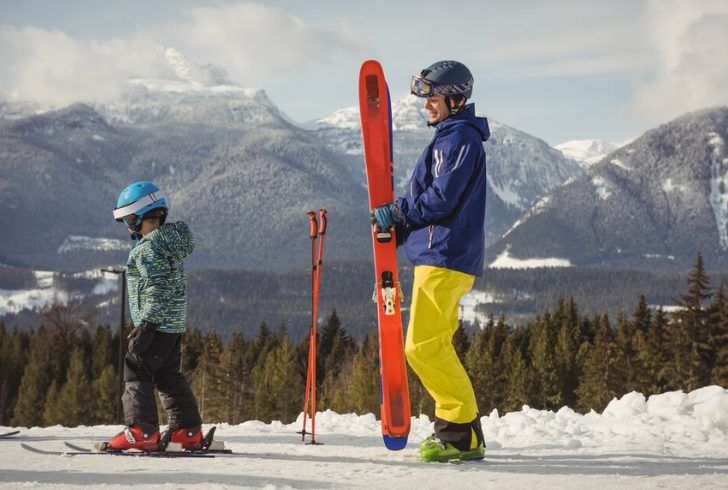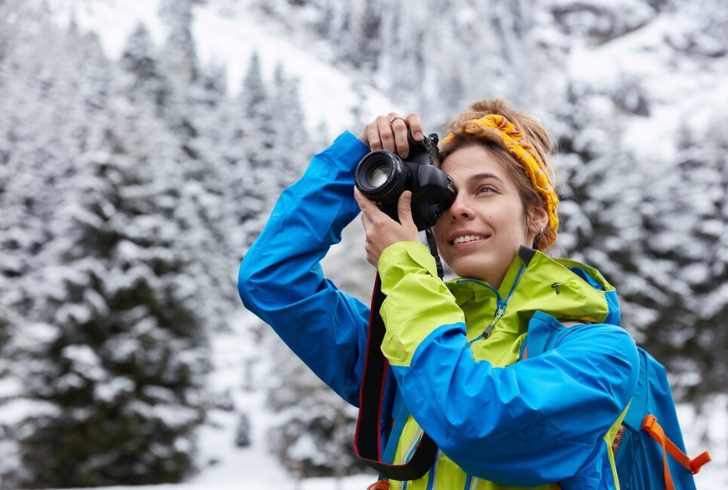Heading out for a ski trip can be both exciting and overwhelming, especially when deciding what to pack. Whether it’s a family getaway or a solo adventure, knowing what to pack for a ski trip can make the experience smoother and more enjoyable.
From essential equipment to casual wear, this guide covers everything needed to ensure readiness for the slopes and beyond.
Discover What to Pack for a Ski Trip
1. Essential Ski Equipment

Packaging the right equipment is crucial to make the most of the skiing experience. Here’s a comprehensive breakdown of the key items to include:
Skis and Poles
- Skis – Choose versatile all-mountain skis that perform well on various terrains. While broader skis offer better flotation in powder, a more versatile pair is ideal for mixed conditions.
- Ski Poles – Look for durable poles with ergonomic grips and a reliable strap system. These features enhance comfort and safety on the slopes.
Bindings and Boots
- Bindings – Ensure that the bindings are well-constructed and reliable. They should provide a secure fit and transfer energy efficiently. Although some models might have specific challenges in powder conditions, overall reliability is key.
- Boots – Opt for boots that offer a customizable fit and excellent all-around performance. This will contribute significantly to comfort and control while skiing.
Helmets and Goggles
- Helmet – A high-quality helmet with good ventilation and warmth is essential for safety and comfort.
- Goggles – Choose goggles with clear optics and a comfortable fit. Goggles with interchangeable lenses can be beneficial for varying light conditions.
Optional Ski Gear and Accessories
- Ski and boot bags
- Heated insoles
- Small ski backpack
- Insulated water bottle or hydration bladder
- Safety equipment for backcountry skiing, such as a beacon, shovel, and probe
2. Ski Clothing
Choosing appropriate clothing is just as important as packing the right gear. The goal is to stay warm, dry, and comfortable from the first lift to the last run.
Base Layers
- Base Layer – Wear moisture-wicking and insulating base layers that keep you warm without bulk. Look for materials that manage moisture effectively.
Mid Layers and Outerwear
- Mid Layer – This layer should balance warmth and breathability. A lightweight, insulating layer works well for cold weather while maintaining flexibility.
- Ski Jacket and Pants – Select a jacket and pants that provide adequate warmth and protection from the elements. Look for waterproof and breathable materials to enhance comfort.
Accessories
- Gloves – Insulated and waterproof gloves are essential for keeping hands warm and dry.
- Ski Socks – Opt for socks with strategic cushioning and good breathability to prevent blisters and discomfort.
3. Off-Mountain Essentials
When not on the slopes, comfortable and practical clothing ensures a pleasant experience.
Casual Layers
- Winter Jacket – Choose a warm and water-resistant jacket for off-mountain activities. It should offer comfort and protection from the elements.
- Winter Boots – Pack sturdy boots suitable for walking in snow and ice.
Accessories
- Warm Casual Layers – Include long pants, sweaters, and beanies.
- Swimsuit and Flip-Flops – If your accommodation has a hot tub or pool, don’t forget these items.
4. Personal Items and Extras

Having the right personal items can enhance convenience and enjoyment during the trip.
Must-Have Items
- Ski passes and lift tickets
- Pocket-friendly snacks like trail mix and bars
- Hand warmers and toe warmers
- Microfiber cloth for cleaning goggles
- Travel toiletries and personal medications
Extras
- Camera for capturing memories
- Hand sanitizer and sunscreen
- Travel pillow for added comfort
Additional Considerations
Before heading to the resort, be aware of a few extra considerations that can impact your skiing experience:
1. Resort Conditions
Resorts might have varying terrain availability based on snow conditions and weather. It’s essential to check resort maps and updates to understand which areas are open or closed.
2. Out-of-Bounds Safety
If exploring side-country areas, ensure you are equipped with safety gear such as a beacon, shovel, and probe. Be familiar with the risks and necessary precautions.
3. Après-Ski Essentials
After a day on the slopes, enjoy some relaxation with après-ski activities. Portable fire pits can enhance the experience by providing warmth and ambiance.
Understanding what to pack for a ski trip ensures that every aspect of the adventure is covered. From ski equipment and clothing to off-mountain essentials and personal items, thorough preparation can lead to a smoother and more enjoyable experience. By following this comprehensive packing guide, you’ll be ready to hit the slopes with confidence and make the most of your ski trip.



